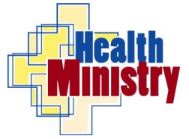 Heart disease is the leading cause of death for men and women in the United States. Every year, 1 in 4 deaths are caused by heart disease.
Heart disease is the leading cause of death for men and women in the United States. Every year, 1 in 4 deaths are caused by heart disease.
WARNING SIGNS OF HEART ATTACK, STROKE & CARDIAC ARREST
HEART ATTACK WARNING SIGNS
- CHEST DISCOMFORT
- Most heart attacks involve discomfort in the center of the chest that lasts more than a few minutes, or that goes away and comes back. It can feel like uncomfortable pressure, squeezing, fullness or pain.
- DISCOMFORT IN OTHER AREAS OF THE UPPER BODY
- SHORTNESS OF BREATH
- OTHER SIGNS
STROKE WARNING SIGNS
Spot a stroke F.A.S.T.:
- Face Drooping Does one side of the face droop or is it numb? Ask the person to smile.
- Arm Weakness Is one arm weak or numb? Ask the person to raise both arms. Does one arm drift downward?
- Speech Difficulty Is speech slurred, are they unable to speak, or are they hard to understand? Ask the person to repeat a simple sentence, like “the sky is blue.” Is the sentence repeated correctly?
- Time to call 9-1-1 If the person shows any of these symptoms, even if the symptoms go away, call 9-1-1 and get them to the hospital immediately.
Dial 9-1-1 Fast
Heart attack and stroke are life-and-death emergencies — every second counts. If you see or have any of the listed symptoms, immediately call 9-1-1 or your emergency response number. Not all these signs occur in every heart attack or stroke. Sometimes they go away and return. If some occur, get help fast! Today heart attack and stroke victims can benefit from new medications and treatments unavailable to patients in years past. For example, clot-busting drugs can stop some heart attacks and strokes in progress, reducing disability and saving lives. But to be effective, these drugs must be given relatively quickly after heart attack or stroke symptoms first appear. So again, don’t delay — get help right away!
More about heart attack
Some heart attacks are sudden and intense — the “movie heart attack,” where no one doubts what’s happening. But most heart attacks start slowly, with mild pain or discomfort. Often people affected aren’t sure what’s wrong and wait too long before getting help.
Immediately call 9-1-1 so an ambulance can be sent for you. As with men, women’s most common heart attack symptom is chest pain or discomfort. But women are somewhat more likely than men to experience some of the other common symptoms, particularly shortness of breath, nausea/vomiting, and back or jaw pain…
Even if you’re not sure it’s a heart attack, have it checked out (tell a doctor about your symptoms). Minutes matter! Fast action can save lives — maybe your own. Call 9-1-1 or your emergency response number.
Calling 9-1-1 is almost always the fastest way to get lifesaving treatment. Emergency medical services (EMS) staff can begin treatment when they arrive — up to an hour sooner than if someone gets to the hospital by car. EMS staff are also trained to revive someone whose heart has stopped. Patients with chest pain who arrive by ambulance usually receive faster treatment at the hospital, too. It is best to call EMS for rapid transport to the emergency room.
More about stroke
Immediately call 9-1-1 or the Emergency Medical Services (EMS) number so an ambulance can be sent. Also, check the time so you’ll know when the first symptoms appeared. A clot-busting drug called tissue plasminogen activator (tPA) may improve the chances of getting better but only if you get them help right away.
A TIA or transient ischemic attack is a “warning stroke” or “mini-stroke” that produces stroke-like symptoms. TIA symptoms usually only last a few minutes but, if left untreated, people who have TIAs have a high risk of stroke. Recognizing and treating TIAs can reduce the risk of a major stroke.
Beyond F.A.S.T. – Other Symptoms You Should Know
- Sudden numbness or weakness of the leg
- Sudden confusion or trouble understanding
- Sudden trouble seeing in one or both eyes
- Sudden trouble walking, dizziness, loss of balance or coordination
- Sudden severe headache with no known cause
Hands-Only CPR can be as effective as CPR with breaths. Watch a demo video and learn how to save a life in 60 seconds by going to the American Heart Association’s web site.
Share this with your friends:

